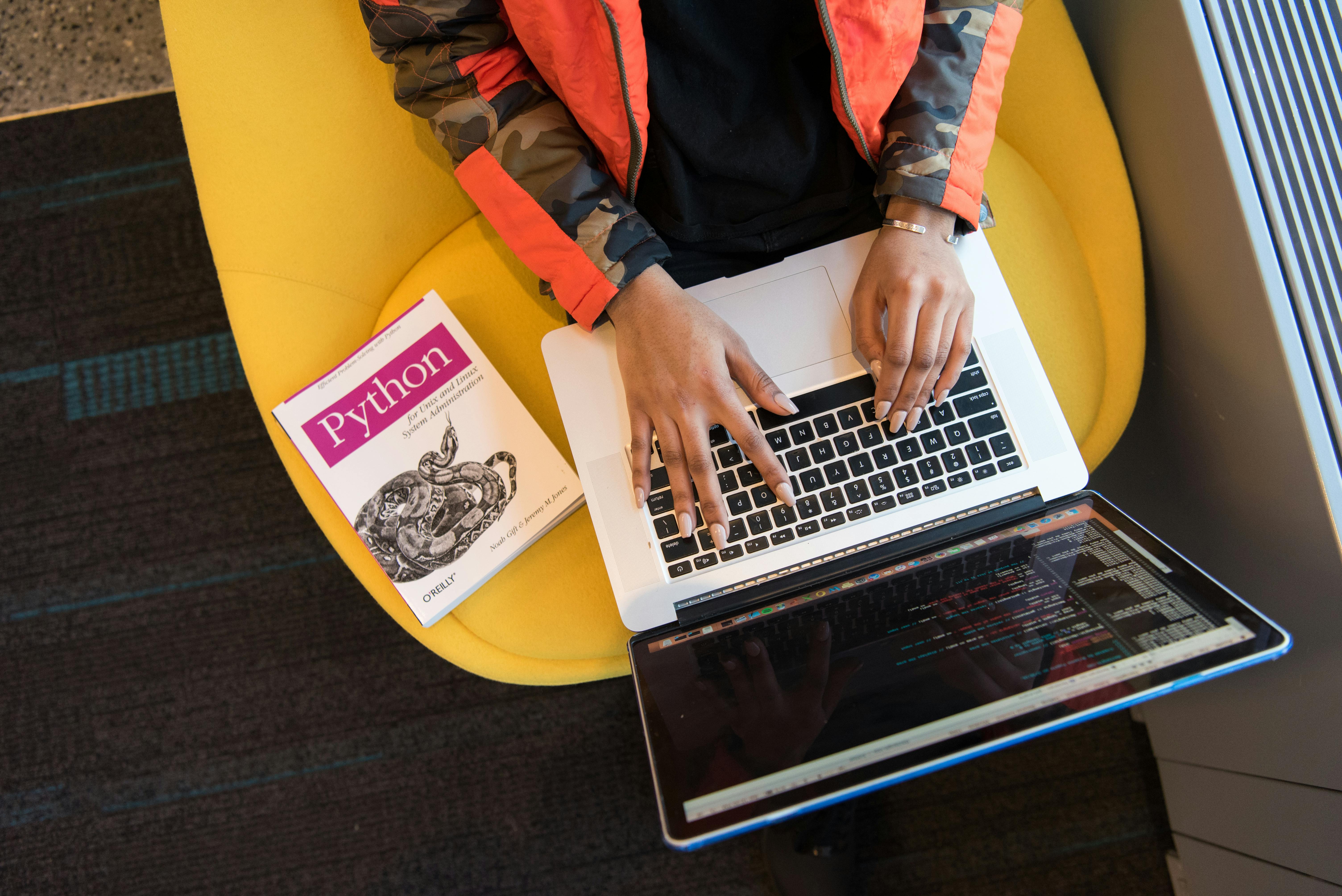Conquering the Virtual Interview: 15 Tips for a Seamless Experience
Navigating the nuances of virtual interviews can be daunting, so we’ve gathered insights from professionals, including Executive Producers and directors, to offer their best tips. From dressing for comfort and professionalism to allowing extra time for flexibility, discover the fifteen valuable strategies to ensure your next virtual interview is a success.
- Dress for Comfort and Professionalism
- Test Your Technology Beforehand
- Prep Your Camera Angles and Background
- Use a Fidget Toy Discreetly
- Update Video-Software Prior to Interview
- Create an AR Interview Environment
- Practice Responses to Common Questions
- Mimic Skilled Orators’ Speech Patterns
- Script Success with “Three C’s”
- Research the Company Beforehand
- Leverage Digital Communication Effectively
- Don’t Over-analyze Interviewer’s Body Language
- Keep a Quick Reference of Key Accomplishments
- Ensure Proper Lighting Setup
- Allow Extra Time for Flexibility
Dress for Comfort and Professionalism
Wear something that is both professional and makes you feel comfortable. When preparing for an interview, it’s important to focus not only on what you know but also on how you feel. As it turns out, your clothing can have a big impact on the latter. Even the most professional business attire won’t do its job if you feel itchy, stiff, or uncomfortable.
The interviewer might not notice you twisting and turning in your chair, but you certainly will, and it might easily distract you from the conversation and making the best impression. Make sure that you wear something clean, professional, but also comfortable, so that you will be able to perform at your best!
Maja Kowalska, Community Manager, Zety
Test Your Technology Beforehand
Testing your technology beforehand is one tip for ensuring a smooth and successful virtual interview. Ensure your internet connection is strong, your camera works properly, and your microphone is clear. The last thing you want is to experience technical difficulties during the interview, which could impact your performance and leave a negative impression on the interviewer.
By testing your technology beforehand, you can eliminate potential issues and feel confident in the interview.
Jared Floyd, Executive Producer, Ajax Creative
Prep Your Camera Angles and Background
Always prepare your setup and do a test run in advance. Ensure that your camera angle is where it should be and that your background is clear and uncluttered. Log on to the meeting platform ahead of your scheduled meeting, if possible.
If the platform needs to do any updates or does not connect for some reason, it is better to get this sorted out before your interview. Taking time to run through these quick steps will help ensure there are no last-minute issues that you have to contend with just before the interview that may cause you to be late.
Lindsey Garito, Director of People and Culture
Use a Fidget Toy Discreetly
Fidgets! If you get nervous in interviews or virtual calls, having a fidget toy or a small, quiet object to play with just out of frame can do wonders to calm your nerves and focus your mind.
One of the best parts of doing virtual interviews is that you don’t have to show your whole body, so you can easily have something small to occupy your hands out of frame, and it won’t be noticed by your interviewer. Some of my favorites are hair elastics, paper clips, and stress balls.
Michelle Pontvert, Online Business Strategist and Educator, Michelle Pontvert
Update Video-Software Prior to Interview
Always download and install video-software updates before your interview.
Nothing is more frustrating than opening a Zoom meeting right before the start time, only to be met with mandatory updates. Depending on your broadband speed, this could cause a significant delay in joining the meeting, souring your initial impression with the interviewer.
This is particularly important when using a video-software provider that you rarely use, likely resulting in a backlog of updates.
The safest approach is, therefore, to open the application roughly an hour before the interview time, ensuring that backlogged updates can be installed in time. Also, because it’s still very close to the interview start time, new updates are unlikely to appear thereafter, maximizing the probability of a smooth start.
Ben Schwencke, Business Psychologist, Test Partnership
Create an AR Interview Environment
To ensure a truly unforgettable virtual interview experience, I recommend harnessing the power of augmented reality (AR). Instead of merely showing up on screen, transport your interviewer to a captivating virtual world that represents your skills and personality. Create a custom AR environment where you’re surrounded by digital artifacts related to your achievements and passions.
For instance, if you’re an architect, have your interview take place within a breathtaking virtual blueprint of your favorite project. This immersive experience not only showcases your creativity but also demonstrates your commitment to innovation, leaving a lasting impression on your interviewer.
Albert Varkki, Co-Founder at Von Baer, Von Baer
Practice Responses to Common Questions
Anticipating common interview questions and practicing your responses will help in conveying clarity, confidence, and preparedness. This means thinking about what you want to say and also how you say it. Practicing out loud, ideally in a setting similar to where you’ll have the interview, can help you get more comfortable.
Try also to pay attention to the length of your answers, ensuring they are concise yet thorough. Lastly, adapting your answers to align with the company’s values and the job role can demonstrate your suitability and genuine interest in the position.
By being well-prepared, you will reduce your anxiety and appear more determined and focused during the interview, making a strong first impression.
Bayu Prihandito, Certified Psychology Consultant, Life Coach, Founder, Life Architekture
Mimic Skilled Orators’ Speech Patterns
No matter how skilled at public speaking or presentations we may be, there is one mistake almost everyone is guilty of making when they are under pressure: talking too fast. It’s not enough to practice beforehand or remind yourself to “slow down” while in the moment. Nerves have a way of taking over.
My favorite trick is a little subconscious training hack. Select a few short videos of highly skilled orators (I have my favorites). These can be TED Talks, political speeches, or celebrity interviews. Watch them for as much time as you can prior to your interview. When you go into your meeting, you will recall the speakers’ cadence of speech, natural pauses, and poised confidence. It is almost guaranteed to improve your delivery.
Emily Dills, Founder, Seattle Nanny Network, Inc.
Script Success with “Three C’s”
To stand out in a virtual interview, script your success with the ‘Three C’s’—Connection, Clarity, and Conciseness.
First, forge a genuine connection by researching your interviewer and tailoring your responses to their company’s ethos, always remembering to give concrete examples to illustrate your points. Second, provide crystal-clear examples of your achievements, showcasing how your skills align with their needs.
Third, practice keeping your answers concise—think elevator pitch, as opposed to epic sagas. And finally, enjoy! Let your passion and enthusiasm for the role radiate through the screen.
Shaun Gozo-Hill, Director, 2Game
Research the Company Beforehand
One way to ensure a great virtual interview is to be prepared. Look up the company beforehand, know the role you are interviewing for, and of course, practice common interview questions and know your strengths and skills for the role you are applying for. The more prepared you are, the better interview you will have!
Diane Howard, RN and Founder, Esthetic Finesse
Leverage Digital Communication Effectively
I get to have thousands of career conversations every year. Nailing a digital interview requires more than showing up; it’s about shining through the screen. After years of hybrid work now, we all know that something intangible is lost in translation when communicating digitally. However, the best interviewers leverage this to their advantage.
Making eye contact with the camera instead of the screen is a game-changer—it simulates real eye contact. Don’t just listen; show you’re listening. A nod, a smile—it’s these nuances that speak volumes.
Leverage your voice’s power—vary it for emphasis, clarity, and warmth. It’s not just what you say, but how you say it. When we lose some non-verbal cues because we’re not face-to-face, your verbal communication must be top-notch. And remember, use your digital backdrop as an additional way to communicate about yourself. Choose a setting that’s professional but shows a bit of your personality. It subtly communicates who you are beyond the resume.
Michael Morgan, Managing Director, Medallion Partners
Don’t Over-analyze Interviewer’s Body Language
In a virtual setting, it’s easy to get caught up in analyzing every gesture or expression, which can distract you from the actual content of the interview. That’s why my advice is simple—avoid overthinking the interviewer’s body language.
When you’re too focused on interpreting the interviewer’s non-verbal cues, you might miss out on crucial information or fail to articulate your responses effectively. Instead, channel your energy into listening attentively to the questions and providing thoughtful, well-structured answers.
Remember, virtual interviews lack some of the in-person dynamics, making it challenging to accurately interpret body language, so that isn’t something you should wear yourself out thinking about.
Riley Beam, Managing Attorney, Douglas R. Beam, P.A.
Keep a Quick Reference of Key Accomplishments
My top recommendation for virtual interview prep is to create a detailed notes document outlining your key accomplishments and the quantifiable impact of your work. List your career highlights, significant projects, and recognitions, each backed with specific metrics like revenue growth or efficiency gains. This document will serve as a quick reference guide during the interview, allowing you to seamlessly weave in impressive statistics and facts without the need to memorize them.
The beauty of virtual interviews is the ability to have these notes discreetly at hand. This means you can focus on presenting your experiences confidently and accurately, ensuring a polished and precise delivery. It eliminates the stress of memorizing figures, allowing you to concentrate on connecting with the interviewer and articulating your thoughts cohesively.
Having a structured overview of your professional journey not only bolsters your responses with hard data but also demonstrates a well-organized, thoughtful approach to your interview preparation. This strategy turns the virtual setting into an advantage, helping you make a compelling, quantified case for your candidacy.
By succinctly showcasing your achievements, you position yourself as a standout candidate, ready to tackle any question with facts and figures that highlight your track record of success.
Katie White, Content Marketing Manager, Centime
Ensure Proper Lighting Setup
For a virtual interview, I would recommend that the candidate pay attention to their lighting setup. Good lighting can greatly impact the impression you make on the interviewer. You want to avoid positioning lights directly behind or in front of you, because this can create unflattering shadows or wash out your appearance.
Instead, aim for lighting that is positioned 45 degrees off to one side of you and angled slightly down. This setup will produce more dynamic and visually appealing footage. Experiment with different lighting options and adjust as needed to achieve a well-lit and professional appearance during your virtual interview.
Rubens Basso, Chief Technology Officer, FieldRoutes
Allow Extra Time for Flexibility
Keep an extra five to ten minutes in any interview instead of setting a time limit and rushing the interview. When you have tons of interviews to conduct, you might start setting a limit for the interviews—perhaps twenty or thirty minutes.
While you can’t predict what will happen in any interview, keeping extra time on hand keeps you at ease in case you want to know more about the candidate, or if the conversation is getting interesting. This way, you won’t miss any questions, and make sure that whatever questions you have, you’re answering them. In the extra time, if you want, you can ask them more about their answers, or you can take a break and relax until your next interview. This helps you free your mind and start from scratch.
Maxine Fraivillig, Operations and Marketing Manager, Malta Sotheby’s International Realty






